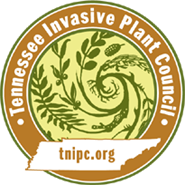Perilla frutescens (L.) Britton
Beefsteak Plant, Chinese basil, Perilla, Perilla Mint| Threat Level | Category |
|---|---|
| Established | Forb/Herb |

Description
Stem
Erect, freely branching, and up to 2m in height, stems are square with four parallel grooves and may be glabrous to villose.Leaves
Opposite and petiolate, leaves are ovate-oblong to broadly ovate with dentate margins and 7-8 pairs of lateral veins which may be slightly raised on the upper surface and more pronounced on the underside. Pilose surface is often purple or purplish-red when mature, and 7-13cm long, 5-10cm wide.Flowers
White, lavender, or light purple flowers are produced in pairs along an indeterminate villose raceme. Inflorescences are often 5-15cm long and arise both from leaf axils and terminally.Fruit
Small, grayish-brown nutlets, approximately 1.5mm in diameter are abundantly produced by plants, with a single plant capable of producing 1,000-1,500 seeds.Images
Image: Chris Evans, University of Illinois, Bugwood.orgMore images of Perilla frutescens
Life History
Perilla, or beefsteak plant, is an annual herb in the Mint Family (Lamiaceae) with an erect growth pattern. In the southeastern United States, its growing season is from July through October. Perilla has a shallow taproot and a fibrous root system. It does not exhibit clonal growth but is a strong colonizer as a result of prolific, highly viable seed production: a single plant may produce 1000 – 1500 seeds. Seeds are spread by birds and surface water movement. The plant tends to form dense stands and threatens native species through resource competition. It may also competitively inhibit growth of another invasive species, Microstegium vimineum (Nepal grass, Japanese stiltgrass), with which Perilla shares similar habitats.Perilla is toxic to cattle and other ruminants, and has been responsible for numerous, sometimes widespread cattle deaths, especially in the mid-20th century. Ketones cause acute respiratory distress syndrome (ARDS) in cattle. The plant is most toxic from August through September, during its flowering and fruiting time, but is also dangerous to cattle and horses if cut and dried with hay in late summer. Cattle tend to avoid eating perilla unless other forage is not available.
Habitat
Disturbed areas, including disturbed natural areas, Perilla can be prevalent along roadsides, ditches, fencerows, waste areas, semi-shaded areas such as forest margins, and hillsides. It frequently occurs in riparian areas, as water is an important dispersal mechanism, but it is capable of growing in a variety of habitats.Origin and Distribution
Perilla is native to east Asia, especially mountainous regions in China, India, and Nepal, where it grows at elevations up to 1200m. It has been widely cultivated in its native range since the seventh century. Perilla frutescens var. frutescens (syn. var. japonica Hara, commonly called egoma, ren, or diggae) is grown for seed oil, while Perilla frutescens var. crispa Deane (shiso, ziso, or cha-jo-ki) is produced for its leaves. A weedier escaped variety, Perilla frutescens var. frutescens, possesses a green stem and weaker seed dormancy.The invasive variety present in the U.S. is believed to be a hybrid between the two cultivated Asian forms and was brought to the U.S. beginning in the late 1880s by immigrants for medicinal and culinary purposes. Its spread thereafter may have been hastened by its use as an ornamental. It was first reported as an invasive species in Georgia in 1984. Perilla’s introduced range in the U.S. is principally in the central, eastern, and southeastern US, where it occurs from the gulf coast throughout the central Great Plains and as far north as New England. A single record also exists from Washington State. The greatest reported densities occur in a vertical line from Illinois and Missouri south to Louisiana, as well as through Pennsylvania, Virginia, and West Virginia.
Perilla contains several potentially beneficial phytochemicals that are currently the subject of scientific study.
Management Recommendations
Mechanical Controls
Mowing or hand-pulling is best done before flowering in late summer to avoid seed production.Herbicidal Controls
Pre-emergence: Picloram, aminopyralid, dicamba, or imazipac. Apply just before a rainfall for best incorporation into the soil. Application is most effective prior to occurrence of minimum soil temperatures required for seed germination, i.e., 10-15 C.Post-emergence: Picloram, 2,4-D glyphosate, or dicamba. Apply to emerged plants from seedling through early flowering stage for most effective control. Remove livestock before treating large populations to reduce risk of ingestion.
Bibliography
EDDMapS. 2018. Early Detection & Distribution Mapping System. The University of Georgia - Center for Invasive Species and Ecosystem Health. Available online at Early Detection & Distribution Mapping System; last accessed August 3, 2018.
Lee, J. K., & Ohnishi, O. (2003). Genetic relationships among cultivated types of Perilla frutescens and their weedy types in East Asia revealed by AFLP markers. Genetic Resources and Crop Evolution, 50(1), 65-74.
Nitta, M., Lee, J. K., & Ohnishi, O. (2003). Asian perilla crops and their weedy forms: Their cultivation, utilization and genetic relationships. Economic botany, 57(2), 245-253.
Nitta, M., & Ohnishi, O. (1999). Genetic relationships among two Perilla crops, shiso and egoma, and the weedy type revealed by RAPD markers. Genes & genetic systems, 74(2), 43-48.
Russell, D., & Byrd, J. (2015). Perilla Mint (Perilla frutescens). Mississippi State University Extension.
Russell, D., Byrd, J., & Zaccaro, M. (2018). Preemergence and postemergence control of perilla mint (Perilla frutescens): avoiding toxicity to livestock. Weed Technology 32(3), 290-296. Doi:10.1017/wet.2018.12
Steckel, L., & Rhodes, N. Perilla Mint. University of Tennessee Institute of Agriculture, U.S. Deaprtment of Agriculture.
Williams, M. A. (2007). An ecological study of an Arkansas invasive mint (Perilla frutescens), Lamiaceae, with a Review of Current Phytochemical and Medical Applications. M.S. Thesis, Department of Biological Sciences, University of Arkansas.
